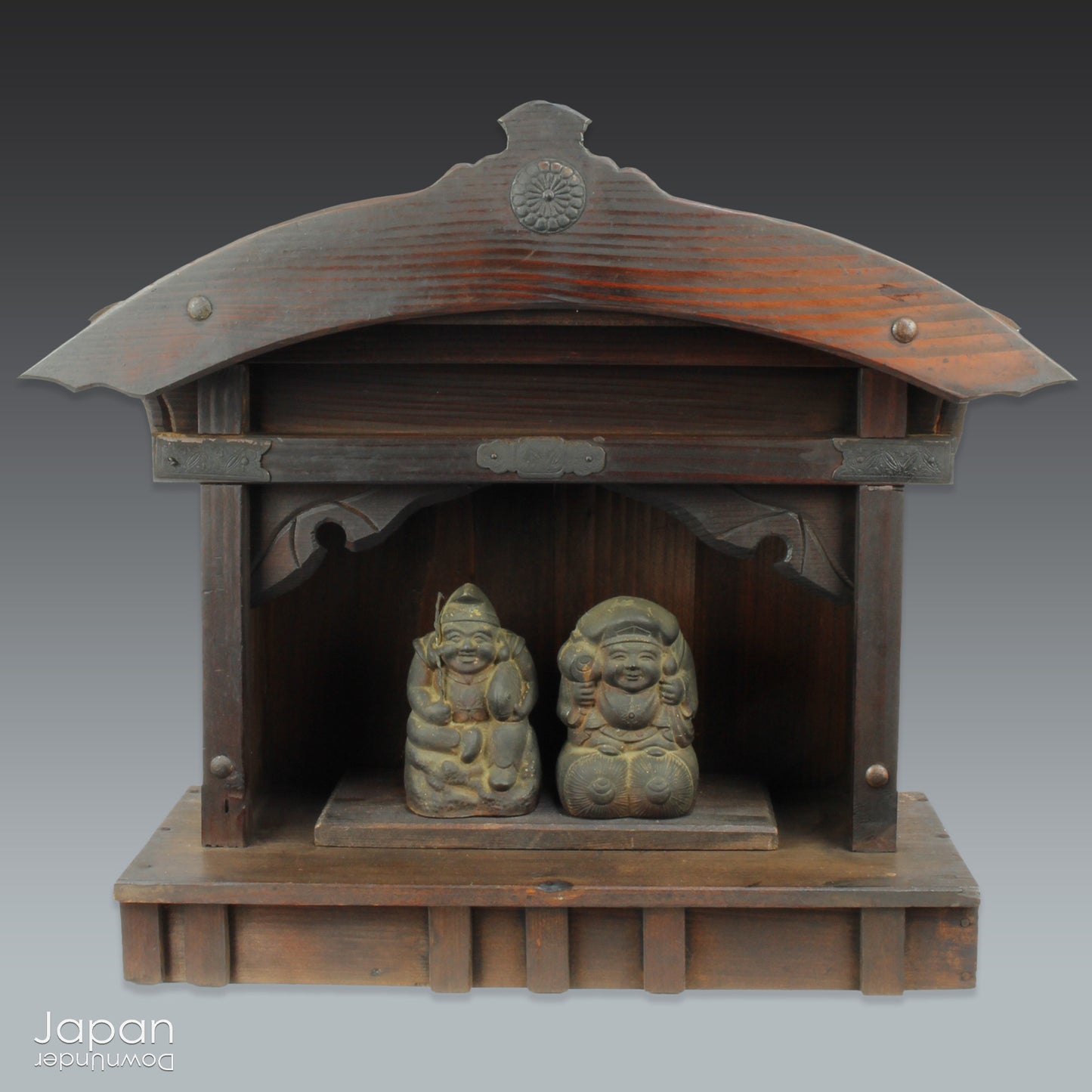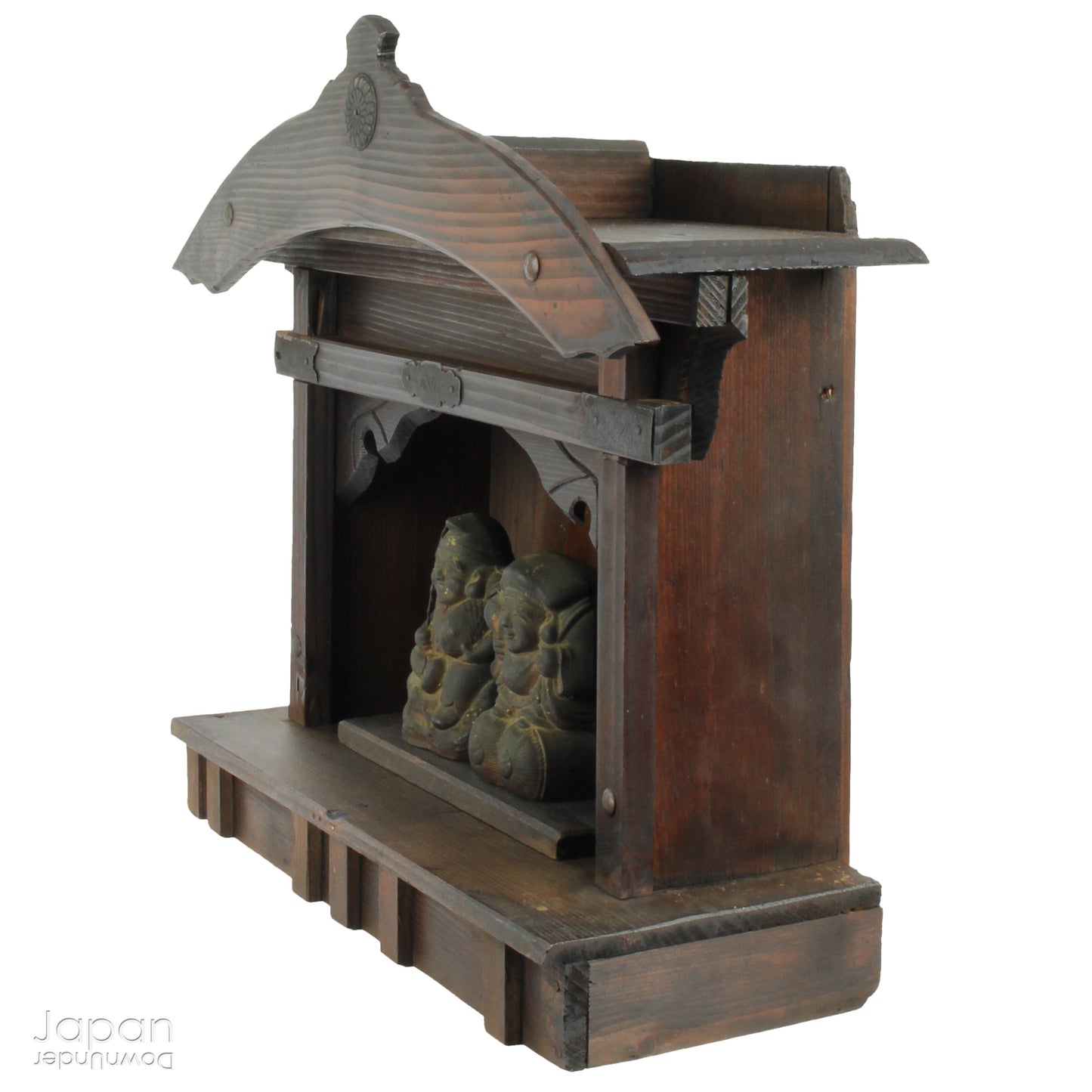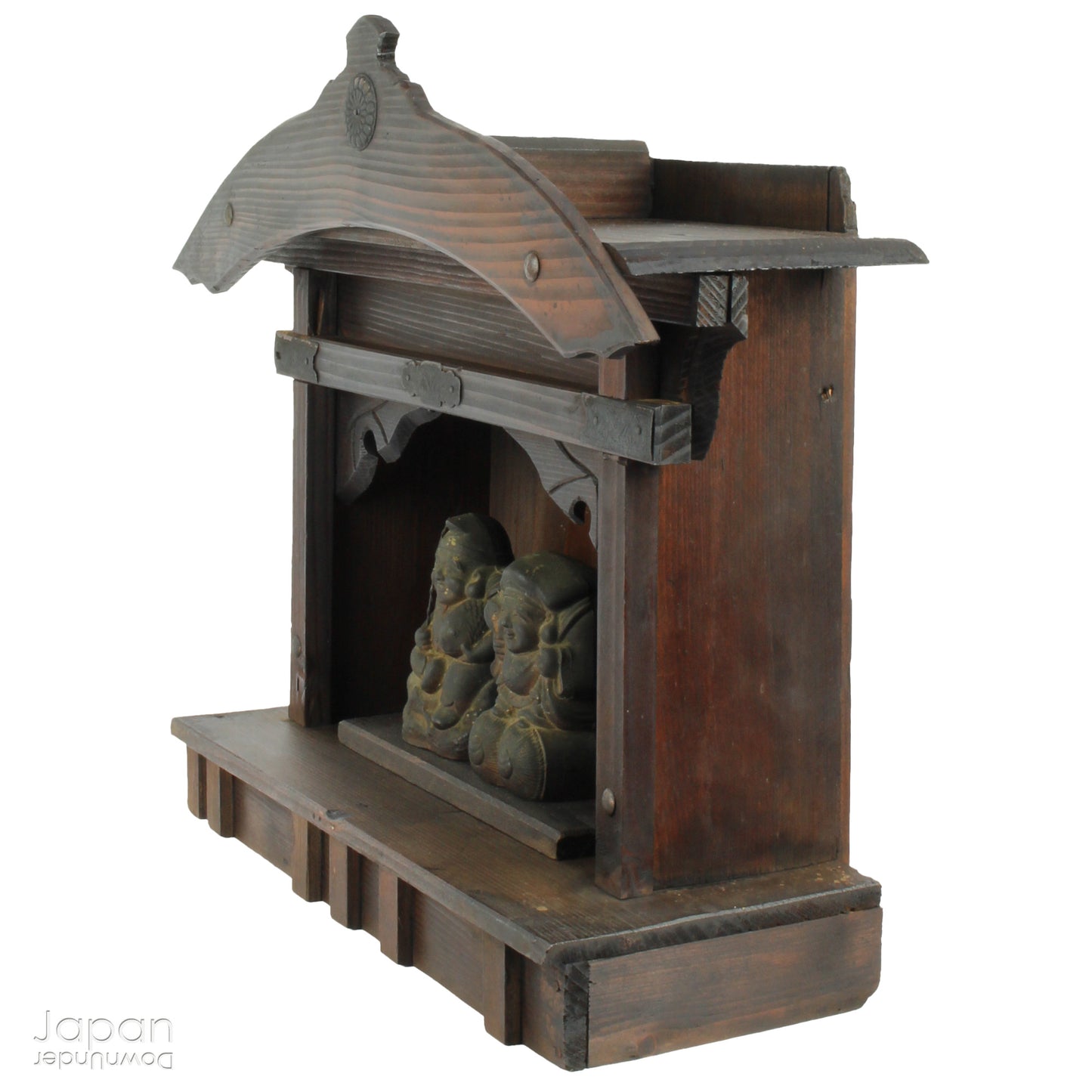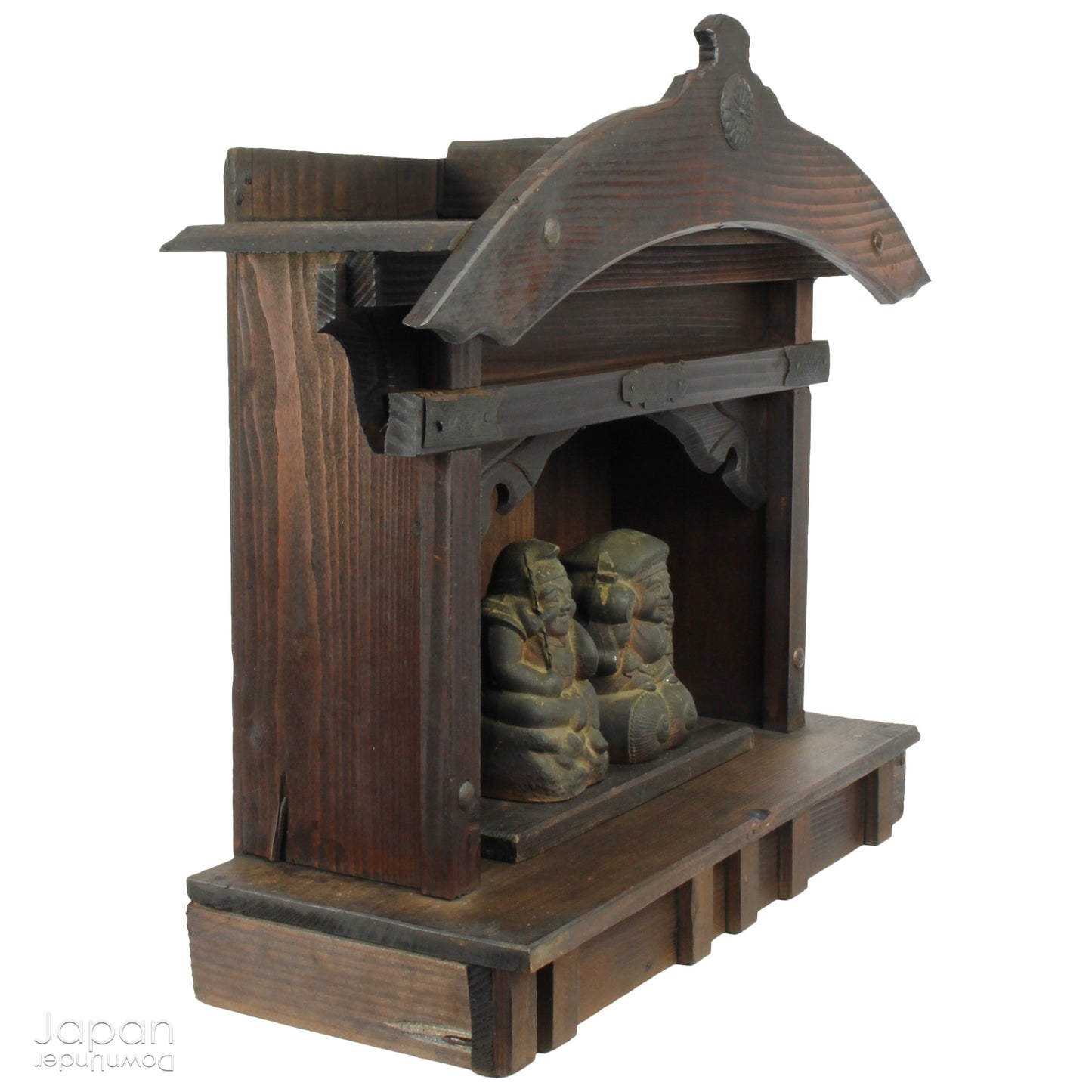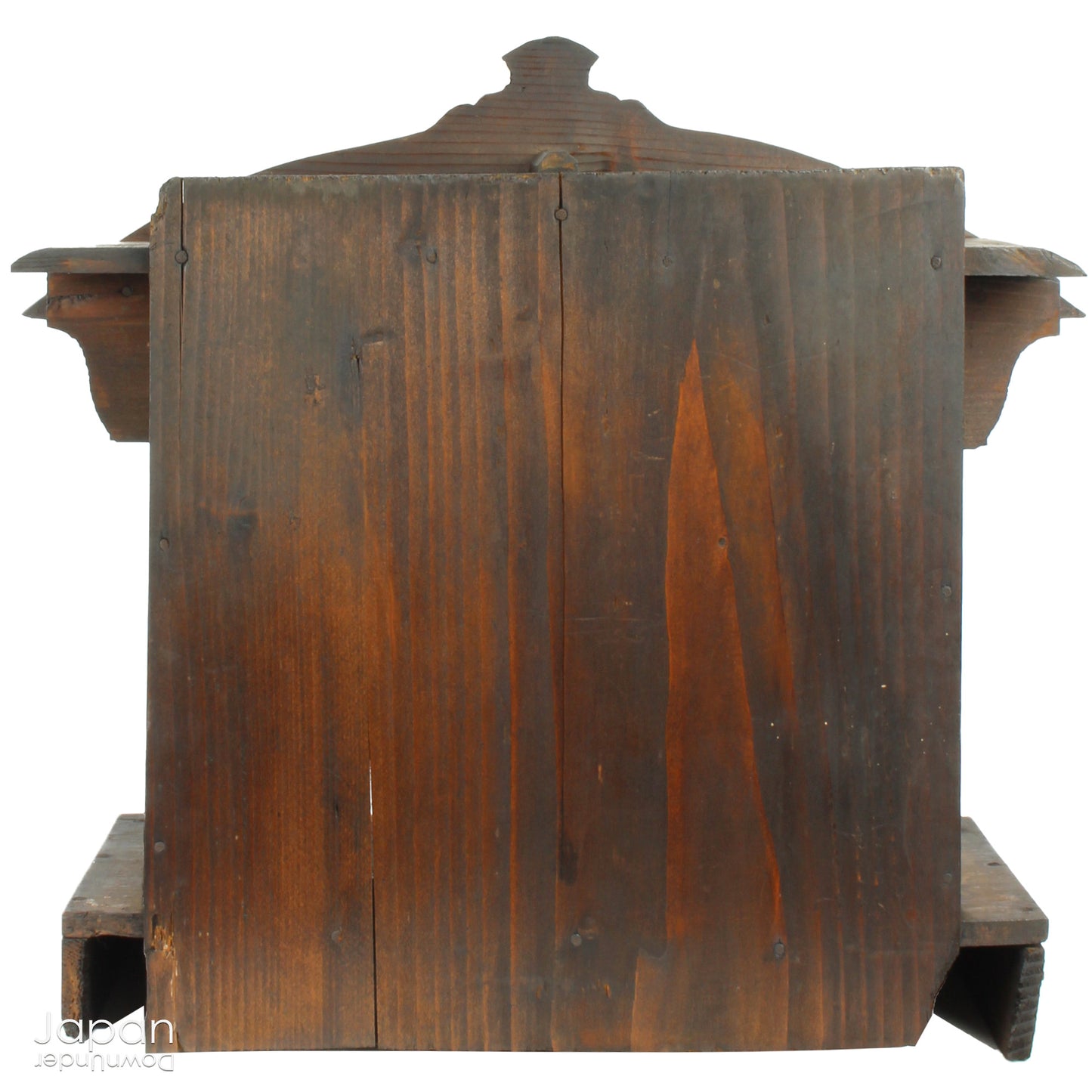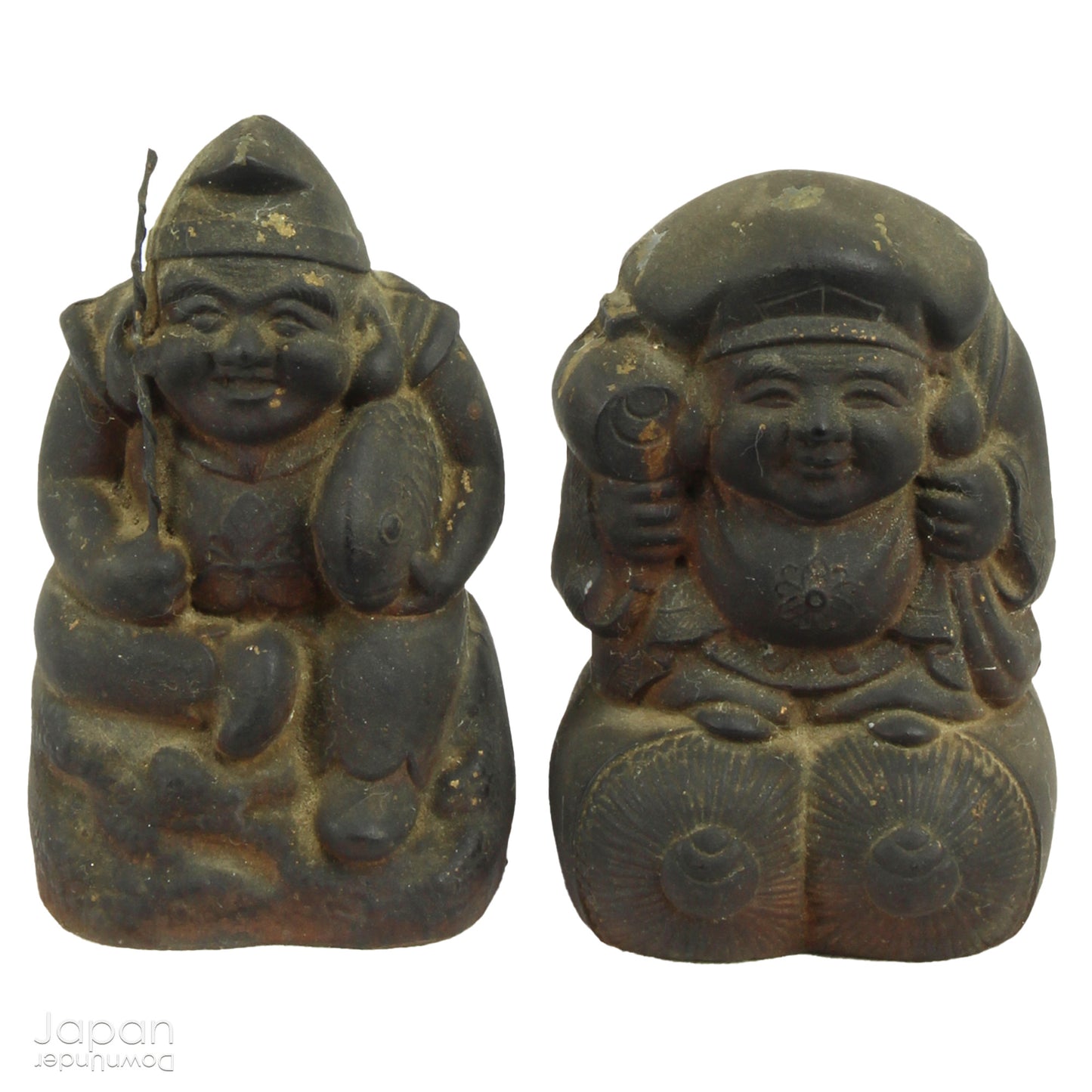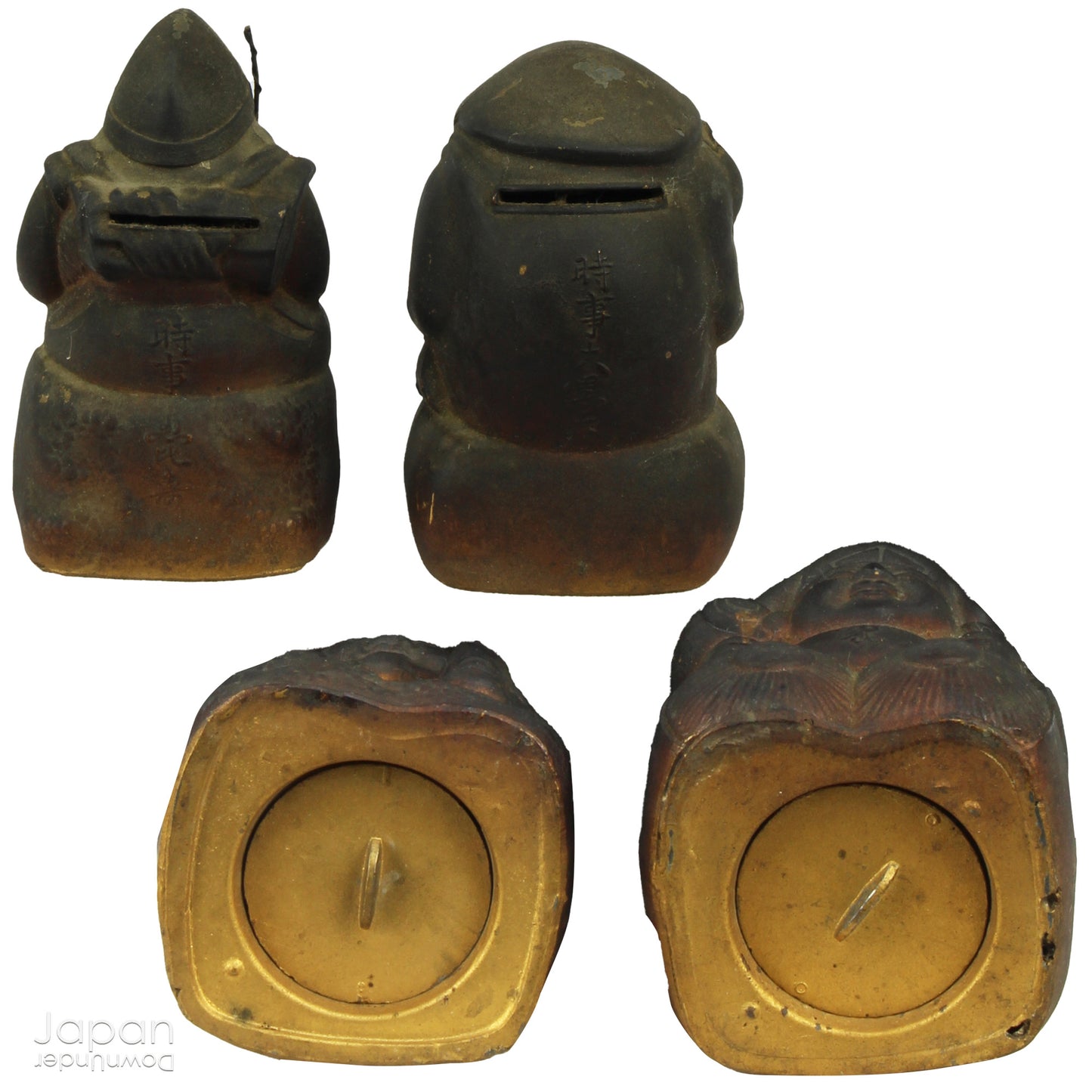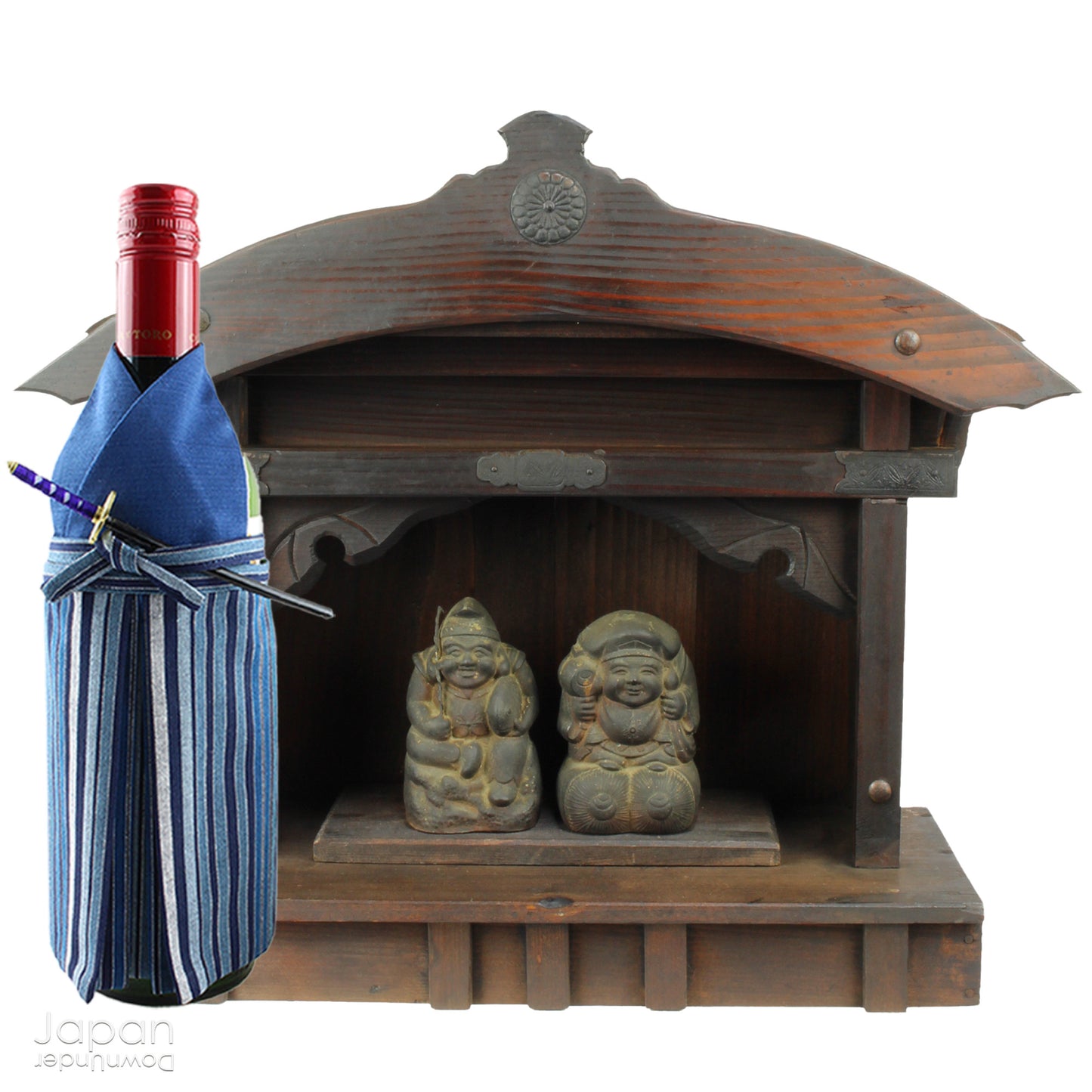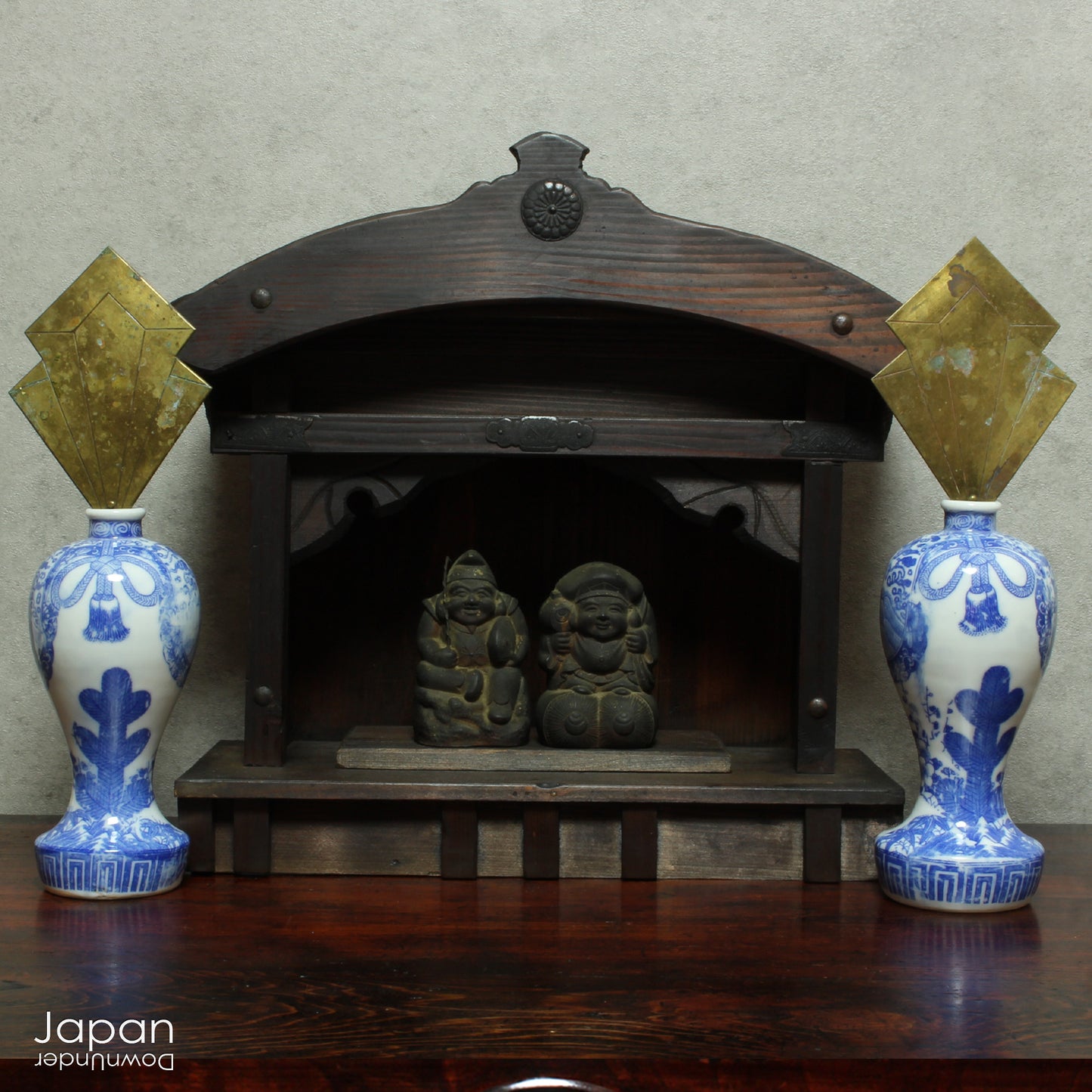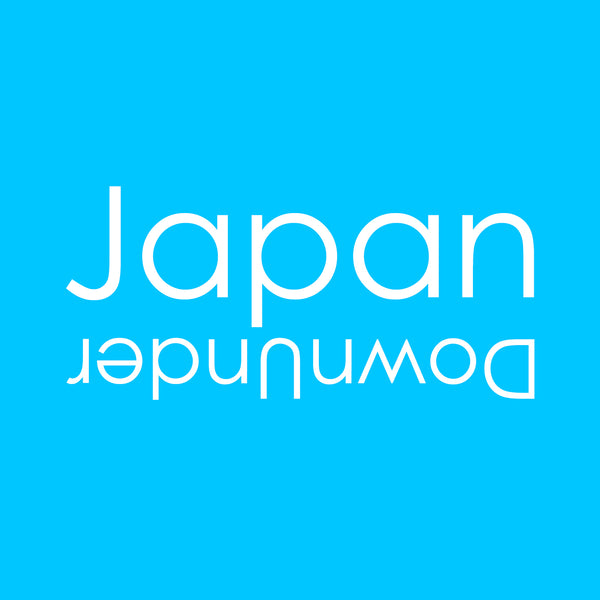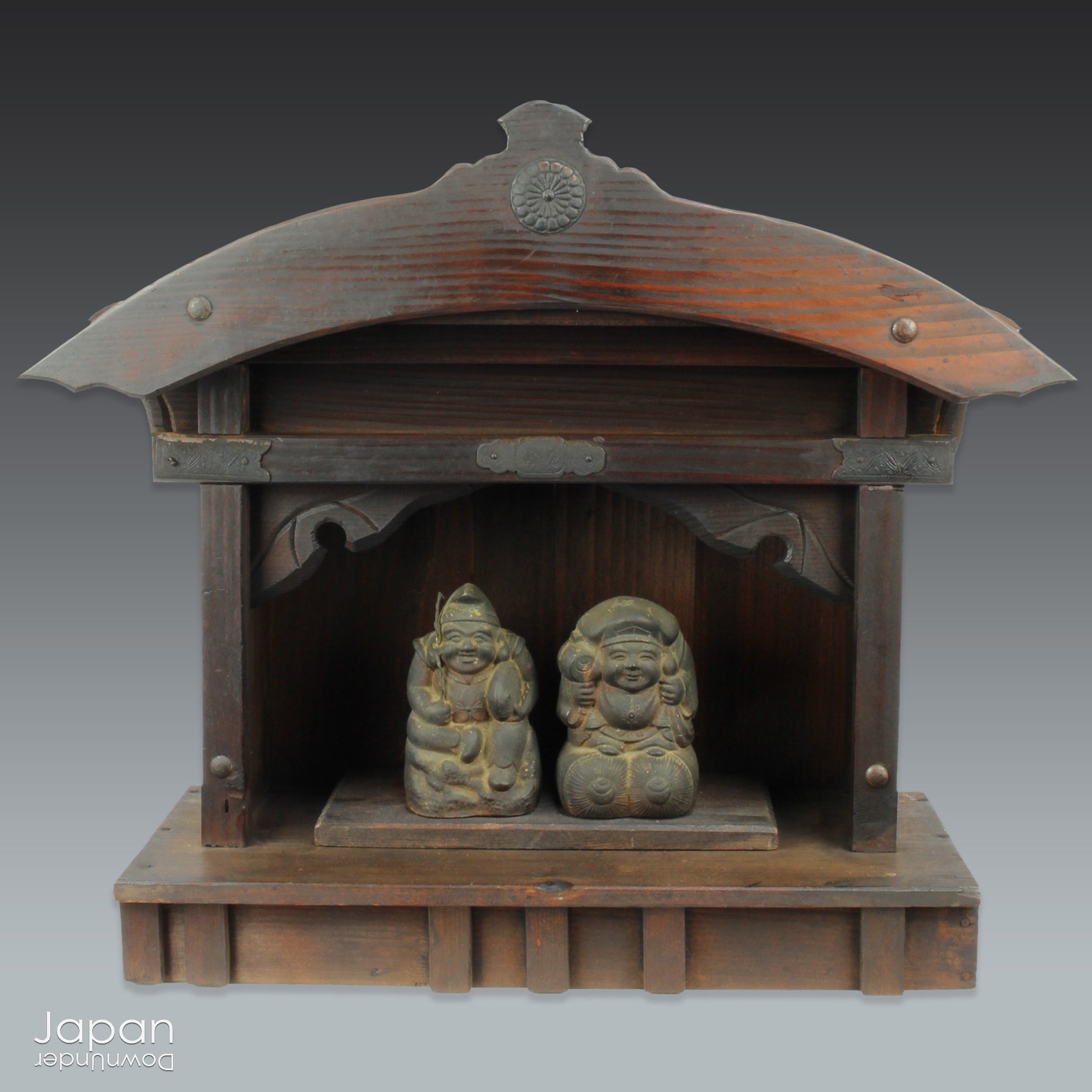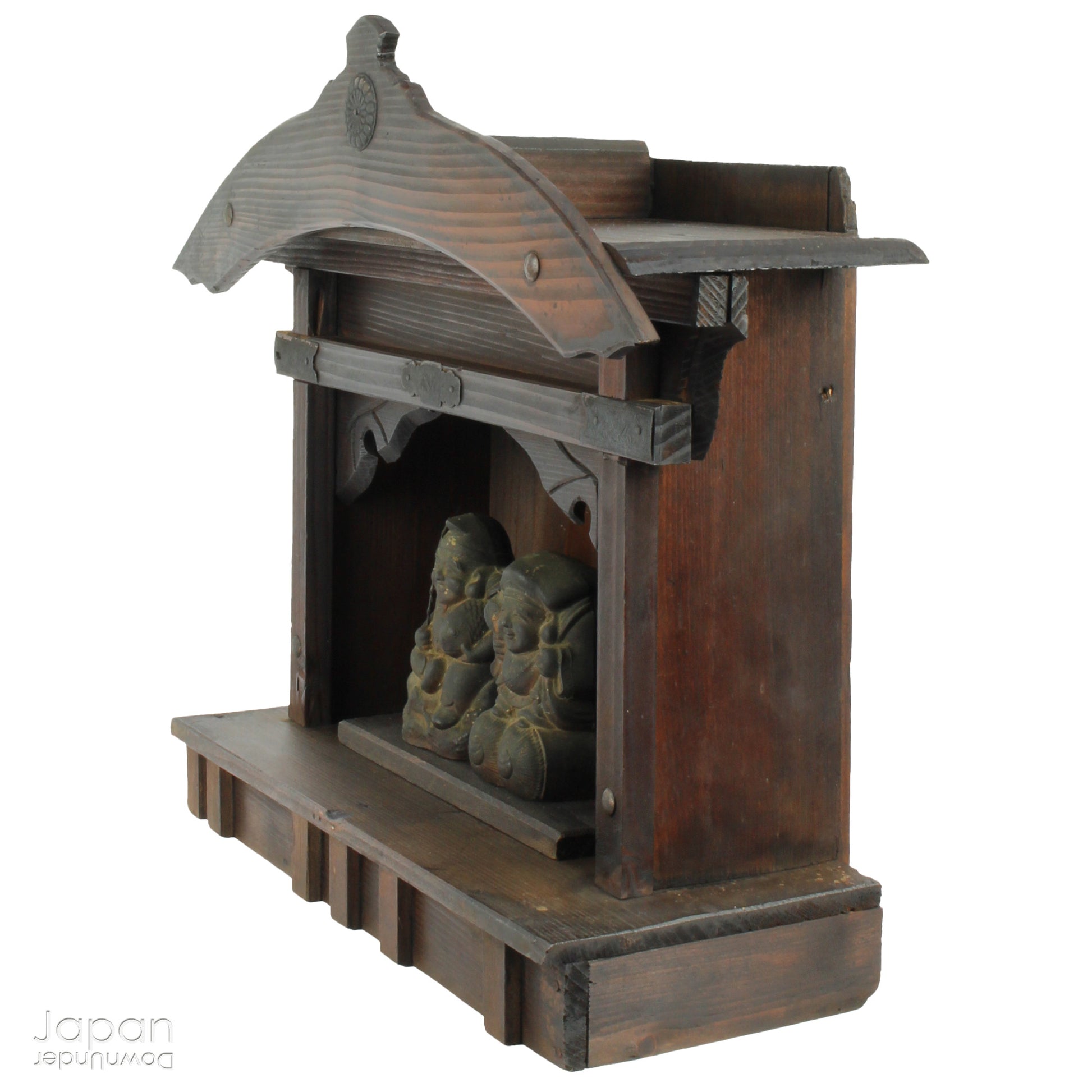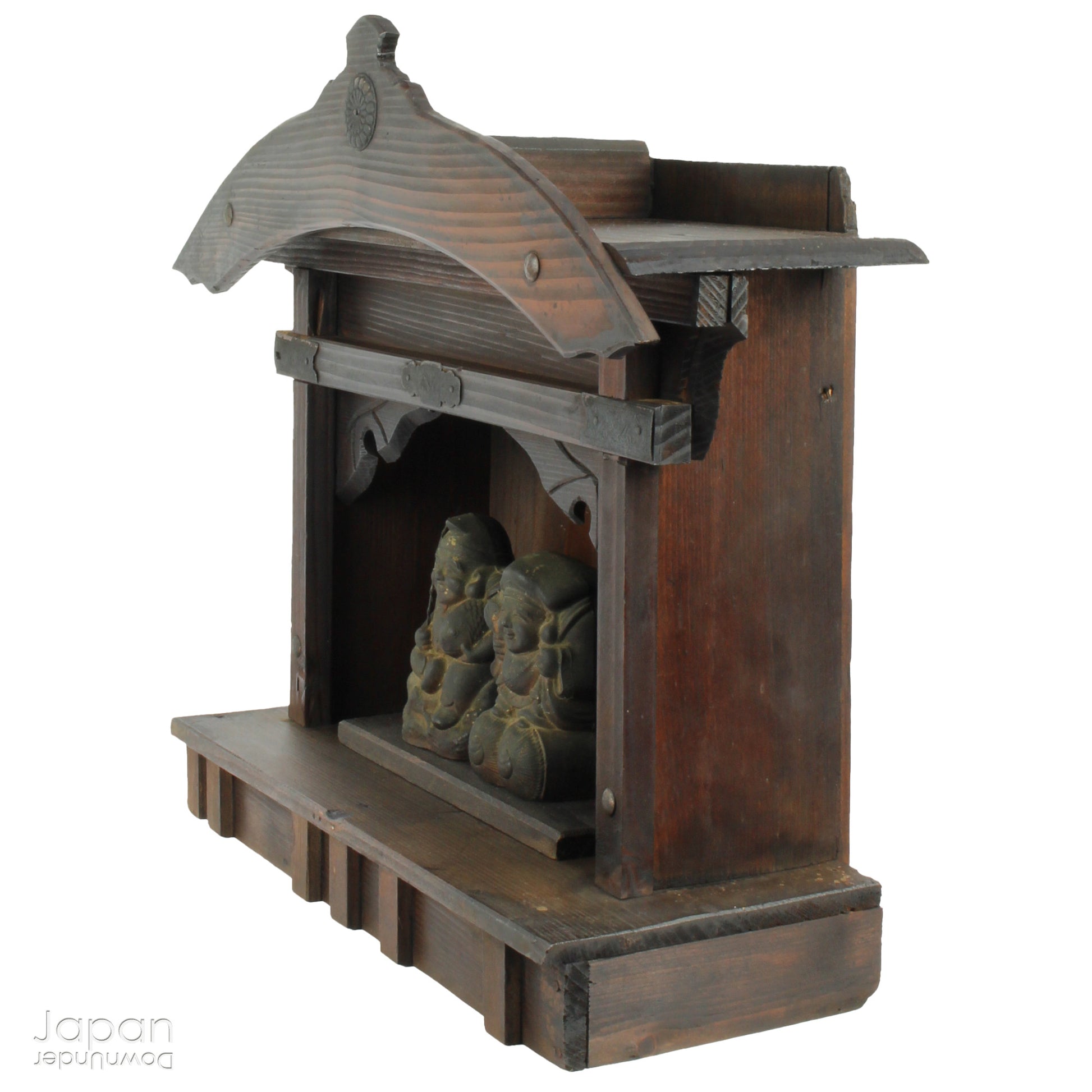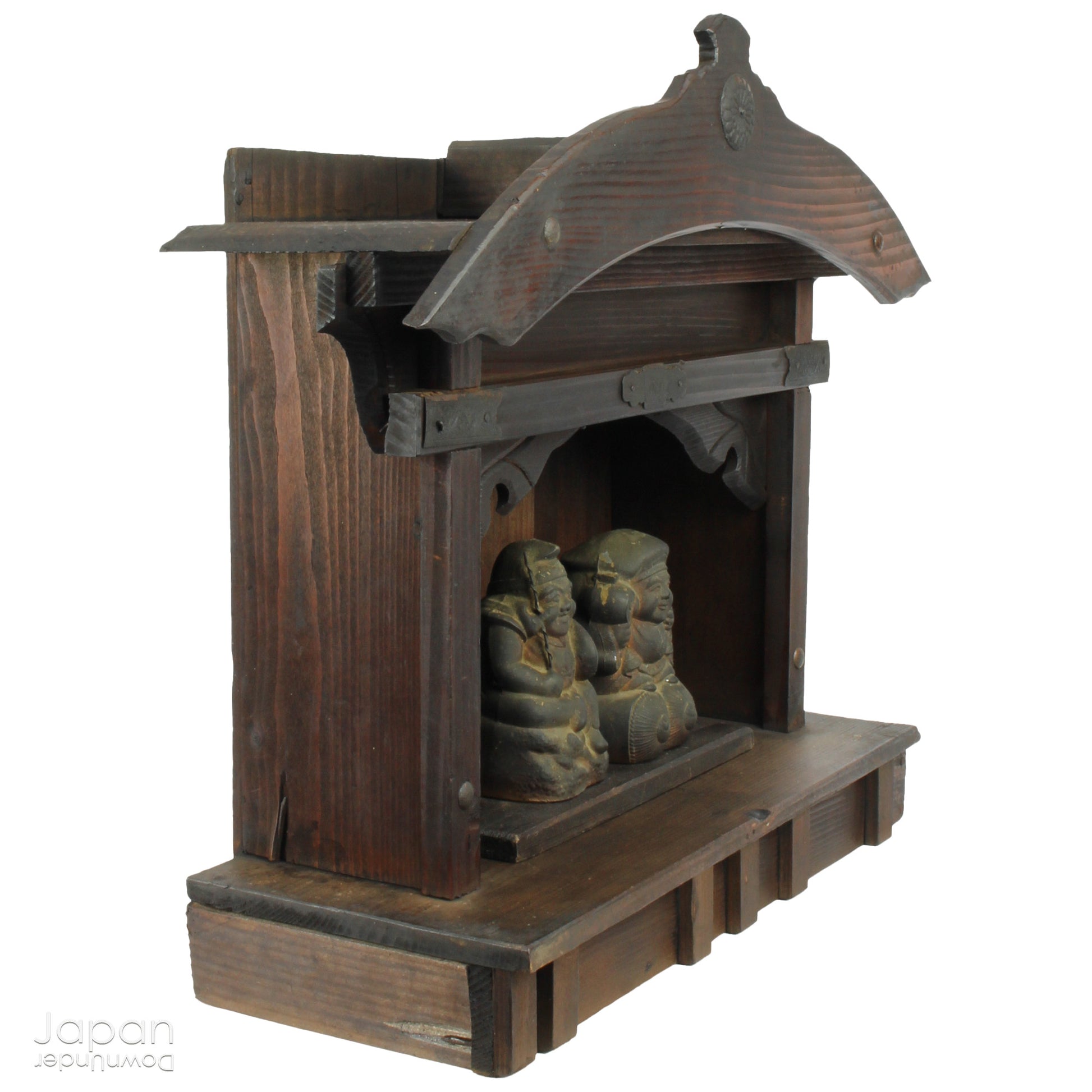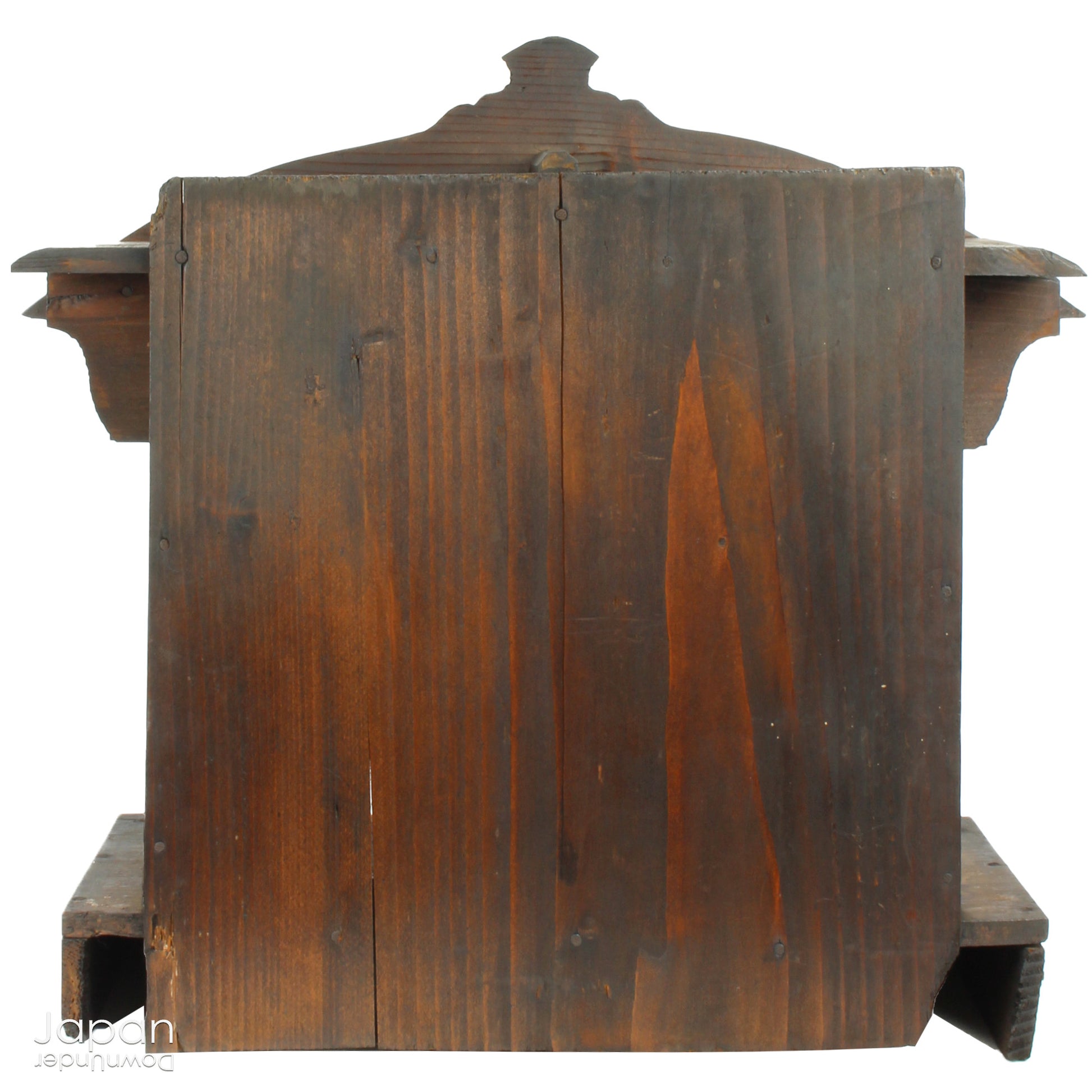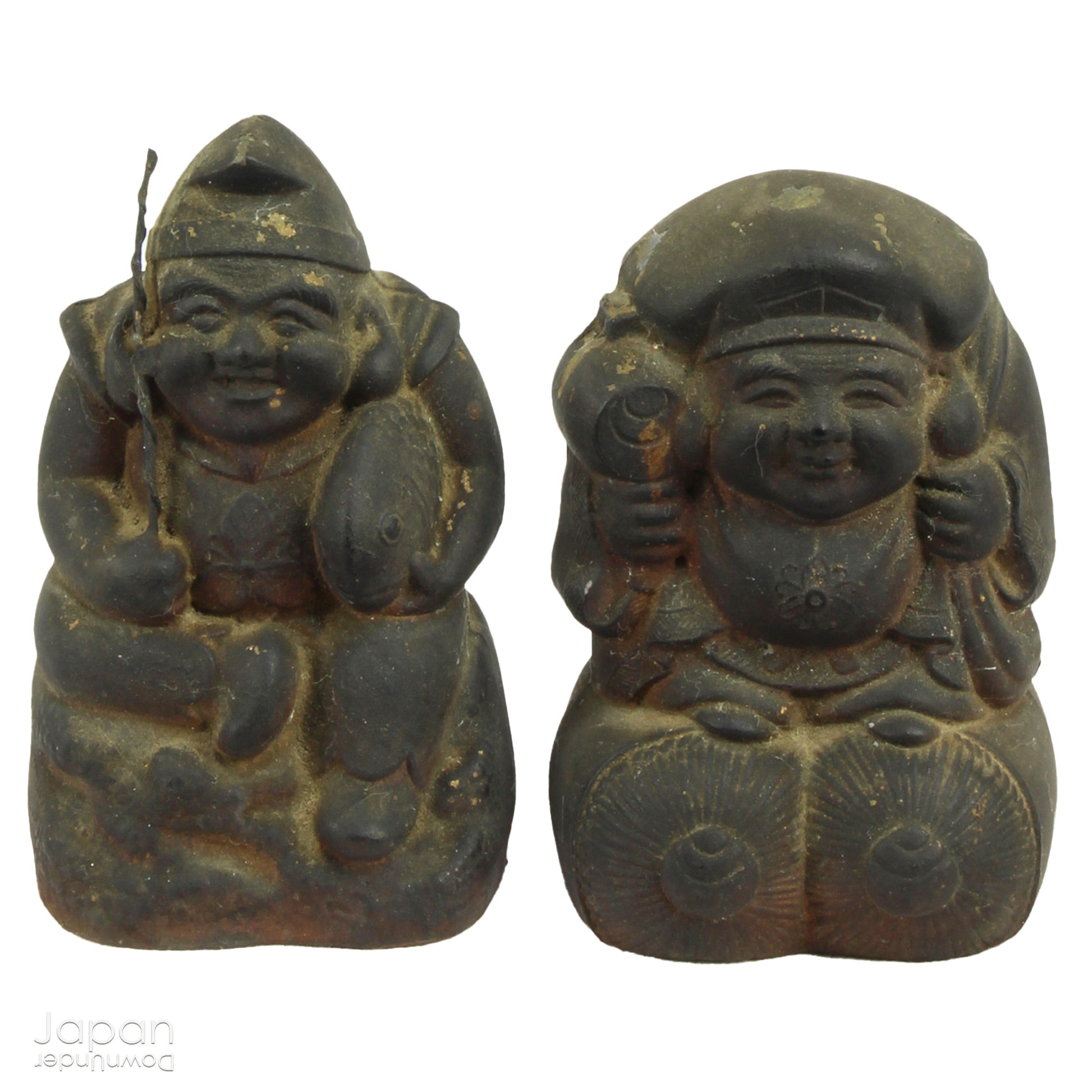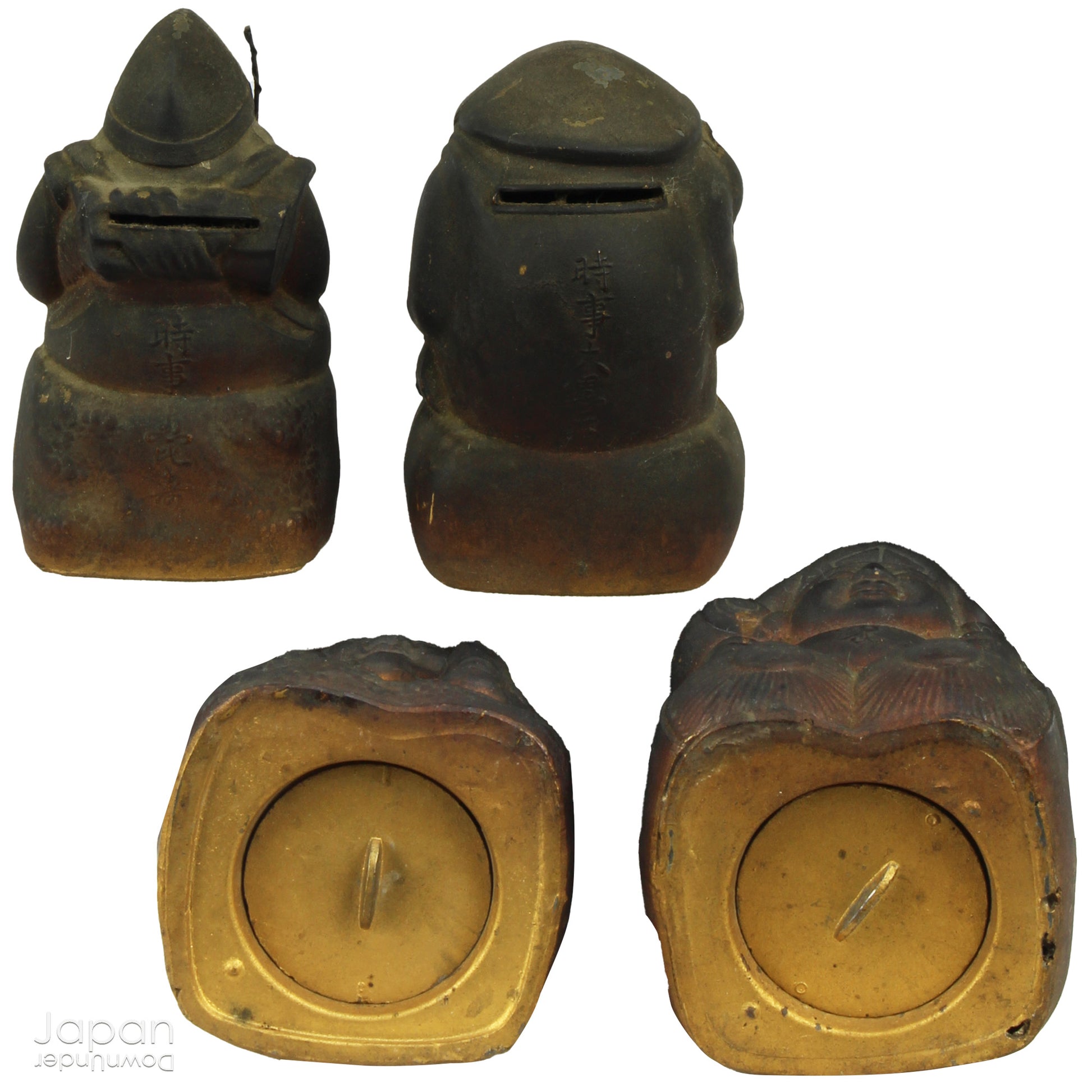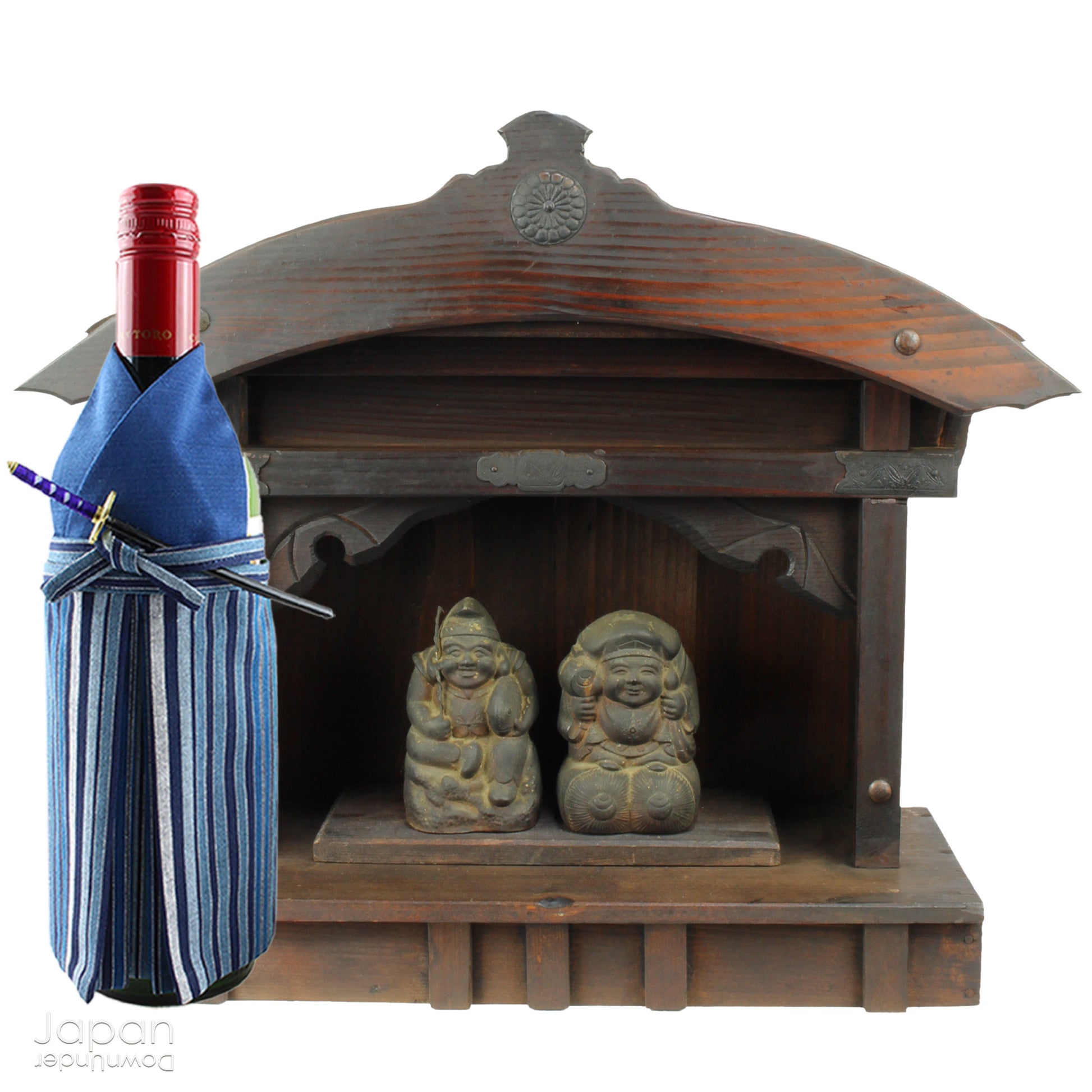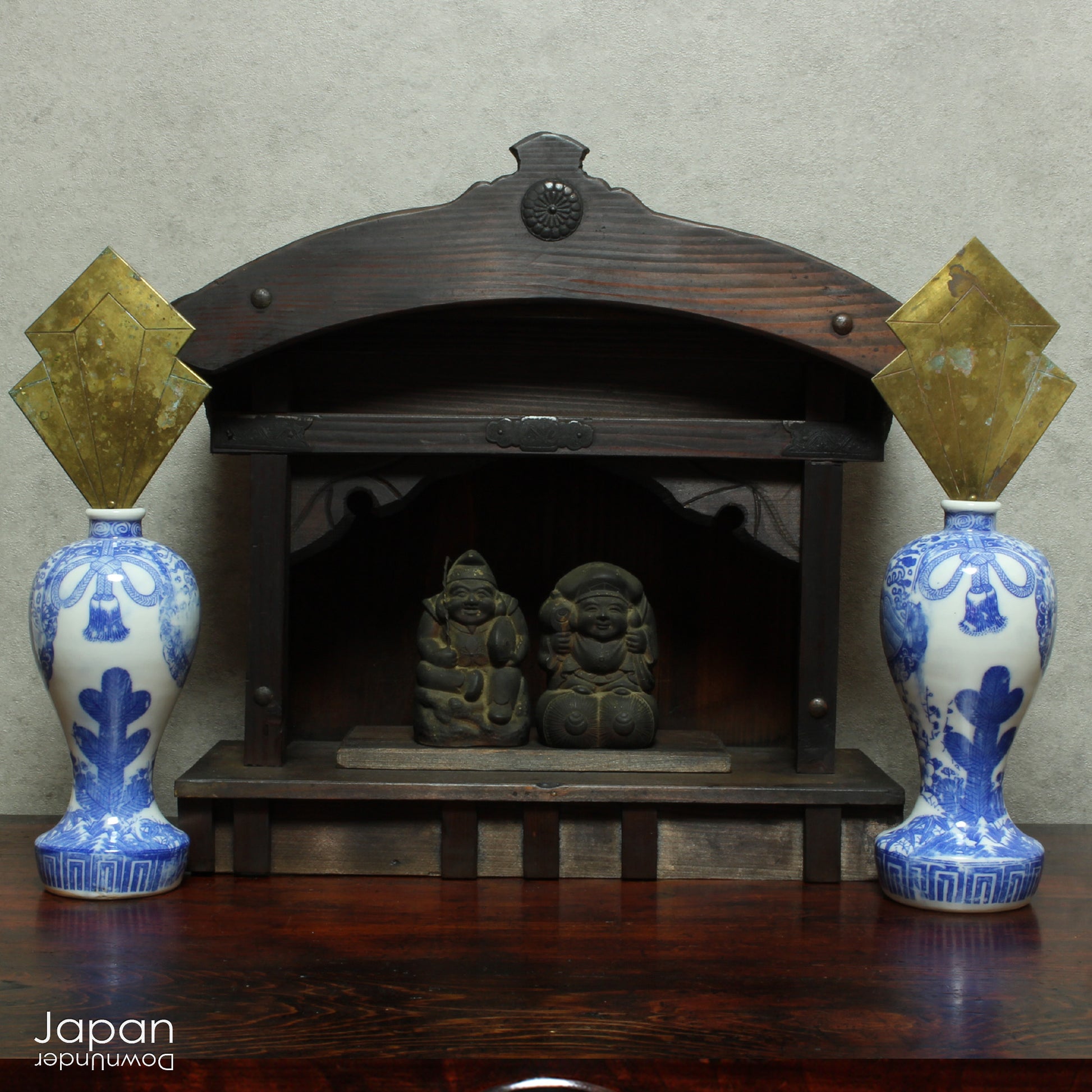JapanDownUnder
japanese antique kamidana shinto shrine with ebisu and daikoku money boxes - spiritual folk art
japanese antique kamidana shinto shrine with ebisu and daikoku money boxes - spiritual folk art
Couldn't load pickup availability
Love Japanese Style Like We Do
Add a touch of sacred tradition and rustic beauty to your spiritual space with this delightful antique Shinto shrine, crafted to be placed on a kamidana (god shelf). This hand-carved folk piece houses the beloved lucky gods Ebisu and Daikoku, and radiates the tranquil spirit of Shinto belief, inviting serenity and good fortune into your home.
At the heart of every kamidana was a kamifuda - an enshrined sacred paper representing a deity, often received from a national Shinto shrine - placed for daily worship. In rural homes, where fishing, farming, and craftsmanship sustained life, families often placed shrines with additional gods. Ebisu, the god of fishermen, and Daikoku, patron of farmers, were especially favored. Some homes even kept a second altar, an engidana or “lucky god shelf,” to ensure abundance in all aspects of life.
Resting inside this shrine is a quaint pair of antique money boxes in the shape of Ebisu and Daikoku. Cast in heavy metal and originally gilded, the figures now bear a rich, dark patina earned from years spent near the warmth and smoke of a traditional hearth. Each piece is finely detailed: Ebisu wears his peaked hat and carries a fishing rod along with a large snapper - a symbol of good luck - while Daikoku stands atop rice bales, wielding his wish-granting mallet and toting a sack of treasure. Both figures feature coin slots at the back and screw-off bases for accessing stored coins. They remain in good antique condition, showing minor wear and scratches but no structural splits.
The shrine itself is simply yet beautifully constructed from light hinoki (Japanese cypress), known for its calming aroma and spiritual significance. It features the softly curved roofline typical of Ebisu and Daikoku shrines and is crowned with a carved chrysanthemum mon (crest). Graceful wood cut-outs accent the upper corners of the open display space, adding to its handmade charm. Though there is some age-related wear - including a small hole in the roof, shrinkage at the back, and a missing piece of wood at the lower corner - these imperfections only enhance its character and mingei (folk craft) authenticity.
A soulful piece of cultural heritage, this antique Shinto shrine is more than décor - it’s a vessel of blessing, tradition, and quiet reverence.
- shrine measures around 32.5 cm (12.8”) tall x 38 cm (15”) across x 13 cm (5.1”) deep.
- gods measure around 9 cm (3.5”) tall x 5.5 cm (2.2”) across.
- weighs 1,200 gm.
(listing for god house with Ebisu and Daikoku)
SHIPPING INFORMATION
- please read our shipping notes in shipping policy.
- we use recycle packaging wherever possible and wrap for safety, rather than appearance!
ABOUT OUR VINTAGE, ANTIQUE AND OTHER ITEMS
We list pieces we feel are worthy of display. There may be scratches, dents, fading and signs of wear and tear. We try to explain the condition of each item exactly, but may miss something.
Information regarding the item and it’s age is obtained from dealers and our personal research. We do our best to give you the correct information but please be aware that we cannot guarantee this information.
Please message us prior to purchase with any questions you may have about our products.
KAMIDANA
Kamidana, literally god (kami) shelf (dana) are miniature household altars used to place an enshrined Shinto kami (god). The enshrined kamifuda (board or paper, representing the god) was that of a clan deity or came from one of the major national shrines. Kamidana became popular in traditional country style minka houses.
Small shrines for tutelary deities, inside a residence, go back to ancient times among the aristocracy. The emergence of the kamidana was closely connected with the development of the domestic Buddhist altar or butsudan, which started the movement of conducting religious rituals in each household.
Kamidana were initially set up to keep Jingu Onusa, charms of the Grand Shrine of Ise, when they began to be widely distributed at the end of the Muromachi period. The Jingu Onusa symbolized Amaterasu Omikami and were considered objects of worship. A special domestic shelf, to respect these charms, was installed and was called Jingu no tana, or shelf of the Grand Shrine. By the mid-Edo era, the institution of the kamidana had spread to most homes as a result of the spread of this Ise cult.
The most common style of kamidana was a plain board forming a shelf, supported by cantilevered brackets from beneath, or stabilized with timber hangers, suspended from the beams above. On this shelf a miniature Shinto shrine was installed to contain the kamifuda. This shrine could be elaborate in design, but unlike the miniature shrine cabinet, or zushi, of the Buddhist altar, the timber was unlacquered. In days gone by, shrines for the kamidana were very expensive for common country people and they were often hand made, by the owner, giving them a lovely rough, simple and rustic appeal.
Kamidana were most often located in a high place, thought to be closest to the heavens and gods, in an area close to an earth floor. As old country kitchens had an earth floor and were a place where many people gathered, they were perfect for the kamidana and prayer. Candles were lit and offerings of rice, fruit, fish, rice and wine were made daily.
Particularly in the homes of farmers, fishermen, merchants and other craftsmen, additional deities with combined Shinto and Buddhist identities found their way to the kamidana. Ebisu and Daikoku-dana were popular. Ebisu, the god of fishing and Daikoku, the god of farming, were particular favorites amongst country folk, whose livelihood depended on agriculture and the ocean. Ebisu and Daikoku were often housed together in a special shrine with a rounded roof, and came to be known as the kitchen gods. Kojin-dana was another popular choice. Kojin was the god of domestic tranquility and good fortune. Inari-dana were also seen. Inari is the Japanese Shinto god who watches over and protects the rice harvest. A temporary toshitoku-dana was set up in almost all homes at the end of the year to welcome and worship the kami of the New Year.
Old Kamidana shrines are a wonderful example of Japanese mingei; a spiritual tool that reminds us of culture and customs of the past.
MINGEI
Mingei are the tools and utensils that were used daily by the common people in Japan. They were inexpensive, simple and functional. Usually produced by hand, in large quantities, their artists were anonymous. They became representative of the local area where they were produced.
The word Mingei combines “min” meaning common people and “gei” meaning art - the art of the common people. It was coined by the Japanese philosopher Sōetsu Yanagi. He found beauty in ordinary crafts for daily use and argued that true beauty could be found only in the objects made by unknown people, in a spirit of selfless innocence and in close harmony with nature.
ENGIMONO
Engimono are charms that bring good luck for such things as an abundant harvest, successful business, loving relationships or good health. Engimono are often available at New Year events in shrines and temples. They are also popular souvenirs, bought when travelling to different places in Japan. There is a variety of Engimono in different areas in Japan. These good luck charms have been passed down through history. Some popular engimono are Eto ornaments (the 12 Japanese zodiac animals), Shinobu Goma, a lucky horse for a good harvest from Iwate Prefecture and Aka Beko a red paper mache cow with a swinging head from Fukushima, thought to fend off evil and disease. Some other well known engimono are Daruma, Tanuki, Shisa and Maneki Neko.
Share
